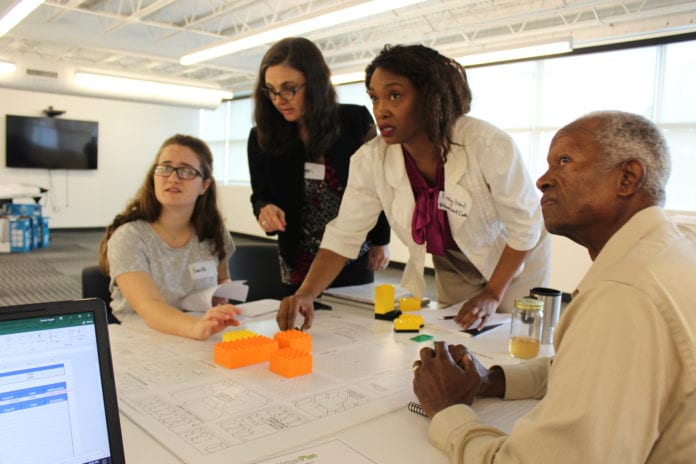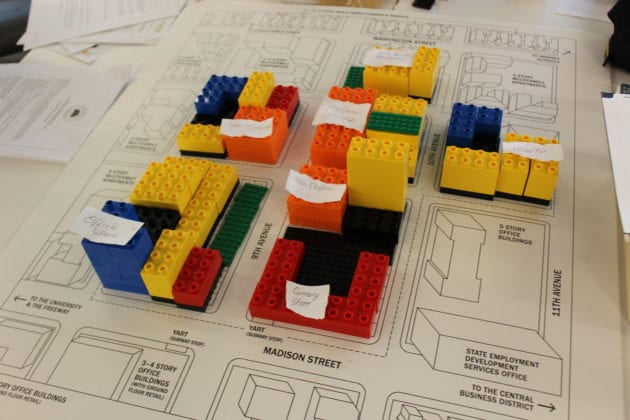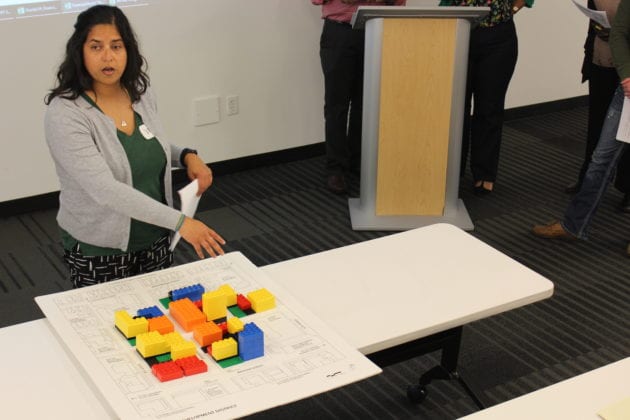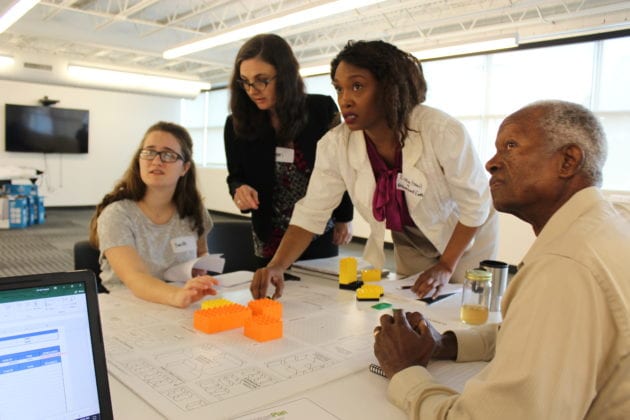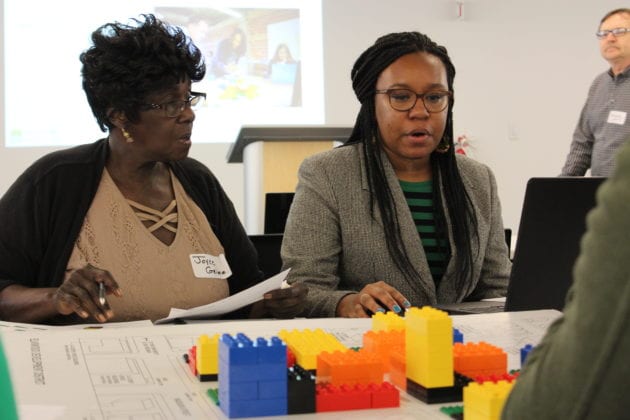“City officials” approved a proposal from a real estate investment group called Ninth Avenue Village that will revitalize 5.5 blocks of an otherwise blighted section of Yorktown – a project to bring up to 1,350 jobs to the town.
And if you’re wondering why you haven’t heard of this project before – or for that matter, if you’re wondering where the heck “Yorktown” is – fear not. It’s a fictional project in a fictional town. But it all created a real experience for about 15 participants in the Urban Land Institute’s Urban Plan Workshop on May 10.
The workshop was designed as a simulation to help community activists and developers gain perspective on how real estate development projects are designed, financed, presented and chosen, said coordinator Imani Jasper.
“It’s really important to get this information out there to the general public,” Jasper said. “It’s important to have everyday citizens informed and engaged about the planning process.”
Here’s the scenario: Yorktown is entertaining bids to revitalize a downtrodden part of the city. The area in question is near a university and an interstate highway.
The group was split into three “development teams,” with various roles: site planner, marketing director, financial director, community liaison and city liaison. The challenge: to design a neighborhood that could win the bid from a “city council” that would vote on proposals at the end of the session.
Sounds easy enough, right? Not so fast.
First of all, there are three historic buildings to consider, one of which CANNOT be demolished. Then, there’s whether or not to bring a “Q-Mart” megastore into the neighborhood – which would create a lot of jobs, but could disrupt the character of the area. And what will you do with the homeless shelter, which the neighborhood association wants gone?
It didn’t stop there: Is there enough green space for parks? What about parking spaces? How long will it take those new apartments to fill up? Do you keep the library and daycare even though there’s high demand for office space?
Oh, and lest we forget: How can you design this development in a way that meets the city’s requirements, keeps the community happy AND makes a profit for investors?
See? Not as simple as it sounds, right?
If you walked into the room while the simulation was going on, you might have been wondering why people were having such spirited debates over the placement of color-coded Lego blocks. And each team was supported by a “coach” who used a spreadsheet to calculate how each change affects everything from job creation to retail saturation to the overall profitability of the project.
So what did we learn today, class?
“Building a city is a complicated process that requires many necessary tradeoffs,” said Leslie Smith of BLDG Memphis, of an earlier training. “Balancing a city’s equitable needs with the values and desires of multiple parties is no small feat. The UrbanPlan program trains how every party at the table plays a role in shaping a city’s fate.”
Jasper said that elsewhere in the country, the UrbanPlan Workshop is offered mostly to public officials. Here in Memphis, it became part of the outreach phase of the Memphis 3.0 plan, and is available to the general public thanks to funding from philanthropic sources. The exercise provides eye-opening moments for everyday citizens, she said.
“One of my favorite moments was when a citizen told me afterwards, ‘I see why we don’t get all the community amenities we want when these developments come. They’re expensive!’” Jasper said. “It provides perspective. The developer isn’t just Mr. Monopoly Monacle, trying to run people off because they’re in it for money. There’s a lot of risk involved.”
Jasper said that there are more trainings planned for this summer. And because of the support from the Kresge Foundation, Memphis nonprofits and community organizations can request ULI Memphis to bring the simulation into neighborhoods.
“It’s mobile,” Jasper said. “As long as there’s Wi-Fi, parking and electricity, we can bring UrbanPlan wherever it needs to come.”
Smith hopes people take advantage of the training.
“Non-profit professionals, policy makers, developers, architects, public officials, resident leaders, and young professionals should make every effort to engage in this simulation to learn these values,” Smith said.


